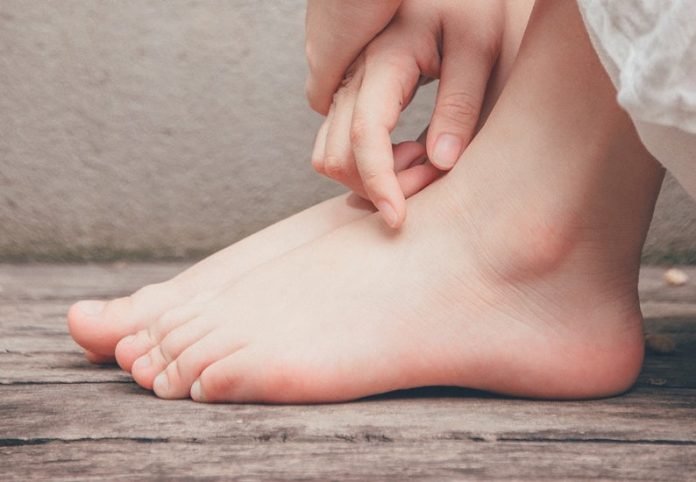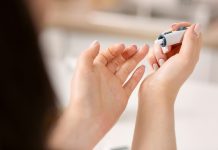
People with type 2 diabetes often suffer from poorly-healing infected wounds on their feet.
Using existing methods, however, it takes two days to grow a bacterial culture used to identify the pathogens infecting the wound and their antibiotic resistance—and thus to find an effective antibiotic.
In a new study, researchers have developed a new rapid test, which will take just one hour to obtain this information.
The research was conducted by Fraunhofer scientists.
Almost a thousand people are diagnosed with diabetes every day in Germany—more than 90 percent of them have type 2 diabetes.
And the number of people developing the condition is rising both in Europe and worldwide. Type 2 diabetes can lead to numerous comorbidities, including hyperglycemia-induced damage to nerve cells.
Affected patients lose feeling in their extremities and often develop skin ulcers that take a long time to heal, if at all. These wounds frequently become infected with various pathogens.
Accordingly, doctors usually treat them with antibiotics. The problem is that not every antibiotic work against every pathogen, and antibiotic resistance is becoming more common.
For this reason, doctors take a swab of the wound and arrange for a bacterial culture to be grown in the laboratory.
This provides information about the type of pathogens and the antibiotics they are resistant to. However, it takes two days before the results are ready.
This is particularly critical in places such as India, where the journey to the nearest hospital can be very long and outpatient treatment—as it usually is—can often only be adjusted to the results after several weeks have passed.
Moreover, treatment with broad-spectrum or ineffective antibiotics runs the risk of spreading antibiotic resistance even further.
In the new study, the team develops a new type of rapid test that enables doctors to use the right antibiotic from the beginning.
With the rapid test, it’s possible to determine within one hour which bacteria have infected the wound and what antibiotic resistance they have—allowing doctors to choose suitable antibiotics right from the start of the treatment.
Instead of culturing bacteria in the lab and observing how they react to various antibiotics, the rapid test analyzes the DNA of the bacteria.
The doctor takes a swab of the wound and puts the wound fluid on the input area of the roughly smartphone-sized cartridge. On the inside, the bacteria are extracted, and their DNA is exposed and dissected.
A biosensor built into the cartridge contains special capture molecules, which form the matching counterparts to the DNA strands of the bacteria and the mutated DNA that causes defined resistance.
If a strand of DNA matches a certain capture molecule, it binds to it, while the DNA strands on all other capture molecules are removed in a rinsing cycle.
The illumination of the fluorescence-labeled bacterial DNA reveals what capture molecules the pathogen DNA has bonded to—and thus what pathogens they are and what kinds of resistance they have.
The team says the rapid test is by no means restricted to infected wounds. It can also be used in cases of blood poisoning, or in a veterinary application to analyze mastitis—that is, inflammation of the mammary gland—in dairy cows.
All that is needed is a different biochip with suitably adapted capture molecules.
The rapid test can also be designed for all types of samples, whether wound fluid, blood, urine or feces.
Experts estimate that the rapid test could be on the market in about two to three years’ time.
The leader of the study is Dr. Harald Peter, Group Leader at Fraunhofer.
Copyright © 2019 Knowridge Science Report. All rights reserved.


